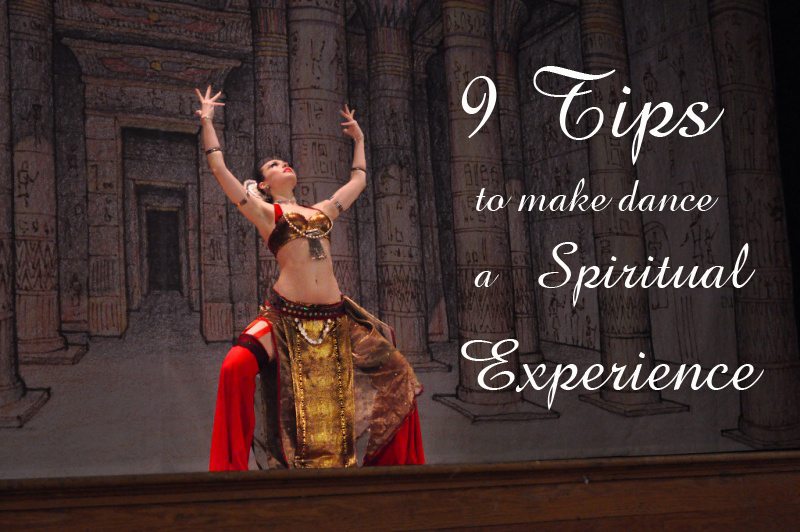I started belly dancing about six years ago.
I was awful.
In the beginning, as with any discipline, it is important to first learn proper technique.
“You must know the rules before you break them,” as the saying goes.
I had been a competitive ice skater for many years in my youth. In some ways, this was an advantage—I knew proper dance posture, I had a sense of my body and what made it look graceful. But in other ways, it made it more difficult to break ice-skating habits (which are more like classical ballet) and relax into this very different, spicy Middle Eastern style.
There were many awkward moments in my bedroom with a full-length mirror. Why was it so hard to make a maya look easy? And a reverse undulation? It was like a magic trick. Does the human body even really do that?
And then it happened. Something clicked. The rhythm of the hand drums suddenly seemed to synch up naturally with my own heart beat. I wasn’t thinking anymore—I was just doing it. Every dancer knows this moment when you are suddenly able to own a style.
Now you are allowed to break the rules.
I believe this is the moment when dance transforms from the technique to a powerful form of spiritual expression that can be used to build power in rituals, add flavor to your ceremonies, and help you become in tune with your mind/body connection.
Here are a few tips to help you get in this frame of mind.
1. Choose a style. Some people say this is unnecessary. I’m not saying that total improvisation can’t have its own kind of power and beauty. But as a general rule, I think most spiritual disciplines are just that—disciplines. Yoga, meditation and tarot reading all benefit from a certain period of structure where the focus is learning something that doesn’t necessarily come naturally at first. So pick something. Any style will do, but styles I’ve found to be especially conducive to spiritual expression: belly dance, African traditions, tribal dance and dance styles from the Far East.
2. Get the technique out of the way. Depending on your skill level, this can take weeks, months or even years. But it’s worth the effort to really get to know a given style well enough to execute it fluidly. This is akin to learning another language. Become comfortable enough with it that you converse fluently, without “stuttering” through transitions or getting stuck on proper form.
3. Pick music that really speaks to you. Your mileage may vary. My husband owns a record store. His big pet peeve is the tendency for people to be elitist about music tastes. “The pleasure of music is a chemical reaction in the brain. For some people, Barbara Streisand really does do it. I can’t stand Barbara Streisand. I don’t get it at all. But I don’t judge it, either.” Well said, love. I don’t recommend Barbara Streisand for dance, but you get the point. Choose music that moves you, not someone else.
4. Cleanse the space. If smoke doesn’t bother you, try smudging. Or sprinkle spring water, or salt, or whatever you do to cleanse a space before any ritual. This can help you get in the right frame of mind, and help you to think of dance more as a ritual than purely physical experience.
5. Dedicate your practice to something. Say it out loud, if you don’t feel too foolish. “I dedicate my dance to healing my body and mind.” “I dedicate my dance to X deity.” “I dedicate my dance to peaceful sleep tonight.” This simple act of consciously focusing your intentions does wonders for the power of expression.
6. Feel, don’t think. This is a big leap. You’ve just spent all that time thinking. That’s what learning technique is—you have to think. It’s much more cerebral. I would not be surprised at all if you actually use a different part of your brain to learn technique. But now it’s time to push that aside and let your “automatic pilot” take over. Instead of thinking about transitions, posture and poise, just think about the music—-where is the music guiding you?
7. Close your eyes. Find a nice open space with some privacy. Save complex balance-heavy moves for later. For now, stick to something easy and just focus on the simple pleasure of movement.
8. When in doubt, breathe. If you start to over-think your dancing, just return to your breath as you would during meditation. This is meditation in motion, and all the same principles apply.
9. Have an out-of-body experience. Okay, not really. I mean that would be cool, but let’s not shoot for the stars just yet. Still, the closer you can get to believing that you are not in control of your movements, the better. The idea is to become open enough something “higher” or transcendent that you allow yourself to be guided by it, instead of guiding yourself. Try imagining yourself like a string puppet, with a hundred tiny threads connecting even tiny muscle in your body to the ceiling, and allow someone else to “pull the strings.” That sounds so weird, but I can’t of a better metaphor.




